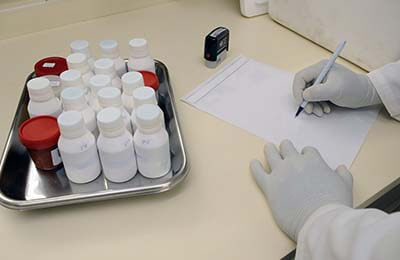循证医学的前身
前言:想要写出一篇令人眼前一亮的文章吗?我们特意为您整理了5篇循证医学的前身范文,相信会为您的写作带来帮助,发现更多的写作思路和灵感。

循证医学的前身范文第1篇
[摘要] 随着疾病谱的改变、医疗模式的转化、健康观念的更新,中医的诊疗思路受到全世界越来越多的关注和重视。在疗效判断由“以病为本”渐向“以人为本”迁移的背景下,如何科学、客观地回答“中医有效性”成为中医发展和走向世界的前提。本文通过对中医临床疗效评价现状的分析,指出了当前存在的问题与不足,阐明了开展中医临床疗效评价的基本方法。强调要在中医理论指导下,进行证候标准规范化研究,重视生命质量,合理选择结局指标,引入循证医学与临床流行病学等现代临床研究方法,采用随机对照试验设计,加强多学科密切合作,严格质量监控,组建专业机构和培养专业人员等。
[关键词] 中医; 结果评价; 方法
General methods for clinical effect assessment of traditional Chinese medicine
ABSTRACT Along with the changes of disease spectrum, medical models and health concept, people pay more and more attention to the diagnostic and therapeutic approaches of traditional Chinese medicine (TCM). With the effect assessment being changed from diseasebased model to patientbased model, how to scientifically and objectively explain the validity of TCM has become the premise for further development of TCM and dissemination of it throughout the world. In this article, the authors analyzed the status quo and problems of the effect assessment of TCM, and proposed some general methods for clinical effect assessment of TCM, including formulating criteria for syndrome differentiation under the guidance of TCM theories, paying attention to quality of life, proper selection of indexes for outcome assessment, application of modern clinical study methods, such as the methods of evidencebased medicine and clinical epidemiology, designing randomized controlled trials, multisubject cooperation, strict supervision of the quality of researches, and establishment of organizations for professional training.
KEY WORDS traditional Chinese medicine; outcome assessment; method
中医有着数千年的历史,她为中华民族的繁衍昌盛做出了不可磨灭的贡献,对我国其他民族医药学及周边国家民族医药学也产生了不容忽视的影响,她是世界传统医药学的重要组成部分。在新世纪里,随着全世界对传统医学的关注和需求的日渐增加,对中医临床疗效进行客观、科学、系统评价的要求也愈来愈强烈。美国替代医学研究中心(National Center for Complementary and Alternative Medicine, NCCAM)的前身替代医学办公室(Office of Alternative Medicine, OAM)顾问委员会,在1995年提交的替代医学研究方法论的报告中就明确指出,传统/替代医学疗法的“有效性评价是一个关键和核心的问题”[1]。美国国立卫生研究院(National Institutes of Health, NIH)系统地从事对各种临床药物、技术和疗法进行评价的世界Cochrane协作网(Cochrane Collaboration),在其设立的7个研究领域中,就有包括中医药在内的补充医学(complementary medicine)领域,还为此成立了专门的评价工作小组,广泛收集世界范围内有关替代(补充)医学疗法的临床对照试验,开始重新审视并系统评价传统医学(包括中医药)的临床疗效[2]。因此,如何对传统医学科学、客观地进行疗效评价,已成为发展中医、弘扬中医的关键。
1 中医临床疗效评价的现状
中医在长期的临床实践中,虽然已经建立起一套比较系统的理论体系和独特的诊疗方法,但传统的临床疗效评价标准只侧重于症状的改善、消失,仅停留在个案报道及病例的临床治疗总结上。
由于中医本身比较复杂、模糊,又受传统临床评价标准影响,现阶段中医临床疗效评价存在诸多问题:如不够重视临床科研方法学,缺乏严谨合理的设计,随机对照试验(randomized controlled trial, RCT)少,随机质量不能让人满意,盲法应用少,仅从单侧面、生物学指标判断疗效,缺乏影响生命质量的评价及对远期结局的评价,对不良反应、随访资料的收集欠缺,统计方法比较落后,没有严格的操作规范和质量控制,简单地照搬西医的临床疗效评价方法和标准等,从而造成了疗效评定困难,疗效评价标准不统一,不能充分体现中医个体诊疗和复合干预策略的特色和优势。使得中医药的研究成果缺乏说服力,难以得到国际认同。
2 如何进行中医临床疗效评价


